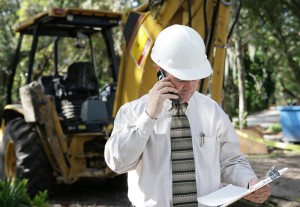 Whether you want to build a deck on your own or hire a contractor like the experienced crew at Distinctive Deck Designs, a building permit is required for the project. Obtaining a building permit for the addition onto your home will insure that the deck is built safely and up to code. A permit will also protect your investment and avoid future costs. For instance, building without a permit can not only cost you in fines but you may be required to tear down what you have already built.
Whether you want to build a deck on your own or hire a contractor like the experienced crew at Distinctive Deck Designs, a building permit is required for the project. Obtaining a building permit for the addition onto your home will insure that the deck is built safely and up to code. A permit will also protect your investment and avoid future costs. For instance, building without a permit can not only cost you in fines but you may be required to tear down what you have already built.
Most building permits are issued the same day that the application is received when a reputable contractor applies for the project permit and is listed as the responsible party. Contractors obtain a building permit by:
- Submitting the building permit application
- Obtaining the necessary reviews
- Paying the required frees
Scheduled inspections throughout the building process ensure that the deck is done accordance to code and if any issues arise, inspectors are there to answer any questions or concerns. The problem with constructing a deck on your own is that a project can change in the midst of construction, so an inspector may find a different deck constructed than the one on the permit. What most homeowners that build a deck on their own do not realize is that even the slightest changes in building could result in a code violation. Examples of common code violations are:
- No protection against decay – All structural elements must be protected from weathering and against decay. This means the constructor must use pre-treated lumber. If standard-grade lumber is used, the constructor must apply an on-site treatment to any exposed areas of the deck.
- Too few or inadequate fasteners – All fasteners must be hot-dipped zinc-coated galvanized steel, stainless steel, copper or silicon bronze to resist corrosion. Untreated fasteners or nails can rust within the year.
- Inadequate or non-approved structure – All structural beams and girders must be constructed with multiple 2x4s to 2x12s. Using 4x4s or 6x6s as girders is no longer allowed.
- Insufficient support and anchoring – To prevent the deck from racking or becoming a projectile in high winds or earthquakes, the deck footing is required to be anchored against uplift and braced laterally.
- Missing or noncompliant guardrails and handrails – If the floor surface is raised more than 30 inches off the ground, a guard rail is required, and benches alone cannot serve as a guardrail.
If you would like a deck constructed onto your home in Fairfax, Loudoun or Price William Counties of northern Virginia with the kind of expertise only Distinctive Deck Design can offer, please contact us today for a free consultation.

